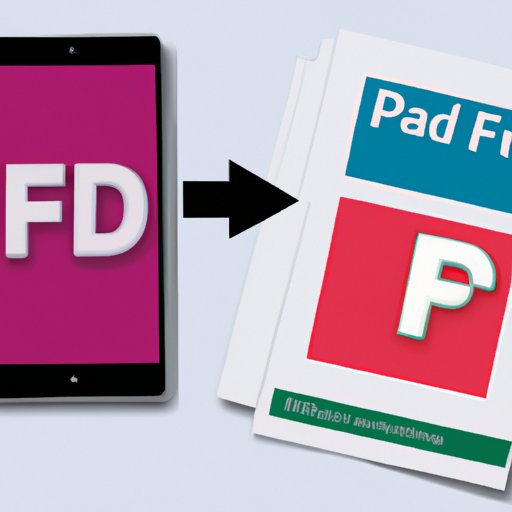Introduction
As paper documents are becoming a thing of the past, PDFs are becoming increasingly popular. PDFs have several advantages over paper documents, most notably compatibility. They’re perfect for sharing and saving electronically. If you’re looking to convert a picture into a PDF, you’ve come to the right place. In this guide, we’ll explore different methods for converting images into PDFs. We’ll cover online/offline image converters, Adobe Acrobat, mobile apps, and free online converters.
Step-by-Step Guide for Using Online or Offline Converters
An image converter is software that allows you to convert an image file into a PDF. Some are available online, while others are offline. Online converters are accessible from anywhere, whereas offline converters require you to install the software on your device. These software typically have a user-friendly interface that makes it easy to convert images into PDFs.
Here’s a step-by-step guide on how to use an online or offline converter to convert a picture into a PDF:
1. Visit the online converter website or install the image converter software on your device.
2. Select the image file you want to convert.
3. Choose PDF as the output format.
4. Click the “Convert” button.
5. Wait for the conversion to complete.
6. Download your PDF file.
How to Use Adobe Acrobat to Convert an Image File into a PDF
Adobe Acrobat is one of the most popular software for converting images into PDFs. Its features have made it a go-to choice for professionals. The process of converting a picture into a PDF using Adobe Acrobat is straightforward and quick.
Here’s how to convert a picture into a PDF using Adobe Acrobat:
1. Open Adobe Acrobat.
2. Import your image file by selecting “Create PDF” and browse through your files to find your image file.
3. Select the image file and click OK.
4. Choose output options such as page size.
5. Select “Create” to generate the PDF.
Understanding Mobile Apps for Converting Pictures into PDFs
Mobile apps are becoming increasingly popular for image-to-PDF conversions. These mobile apps offer different features like auto-cropping and adjusting the contrast, giving you the ability to create professional-looking documents from your phone. Adobe Scan, Scanner Pro, and CamScanner are the most popular apps for converting pictures into PDFs.
Here’s a step-by-step guide on how to use Adobe Scan to convert a picture into a PDF:
1. Download Adobe Scan from your app store.
2. Open Adobe Scan and point your camera at the picture document you want to convert.
3. Adobe Scan will automatically detect the boundaries of the document and adjust the crop accordingly. You can also crop it manually.
4. Adjust the brightness, contrast, and rotate the image as necessary.
5. Select “PDF” as the output format.
6. Save your newly converted PDF document.
Make Use of Free Online Converters to Convert Your Pictures into PDFs
Free online converters offer an affordable approach to converting image files into PDFs. These free online converters are easy to use and offer the basic features required to convert images into PDFs. Here’s a list of reputable, free online converters:
1. Smallpdf
2. Zamzar
3. Online-Convert.com
4. OnlineOCR
5. JPEG2PDF
Here’s how to use Smallpdf to convert a picture into a PDF:
1. Visit the Smallpdf website.
2. Select “Image to PDF.”
3. Drag and drop the picture you want to convert.
4. Select “Create PDF Now.”
5. Wait for the conversion process to complete.
6. Download the new PDF.
Comparison of Tools for Converting Images into PDFs
Each of the methods discussed offers different advantages and disadvantages. Online/offline converters may offer speed and accessibility, while Adobe Acrobat may provide more advanced editing features. Mobile apps may be perfect for people on the go, while free online converters may be ideal for those on a tight budget.
Specific Use Cases for Converting Pictures into PDFs
Converting resumes and invoices into PDFs has become a standard practice. It helps to keep everything organized, professional, and accessible. When converting such documents, there are several things to consider. For instance, when converting resumes, ensure that the PDF’s layout is consistent and that the text format remains the same. For invoices, ensure that the text is readable and that you don’t compress it too much.
Conclusion
In conclusion, converting pictures into PDFs has never been easier. With the various tools and methods that we have covered, you can choose the perfect one for your needs. Converting images into PDFs is essential for keeping everything organized and maintaining a professional look. We encourage you to try out the different methods discussed and share the article with others.
